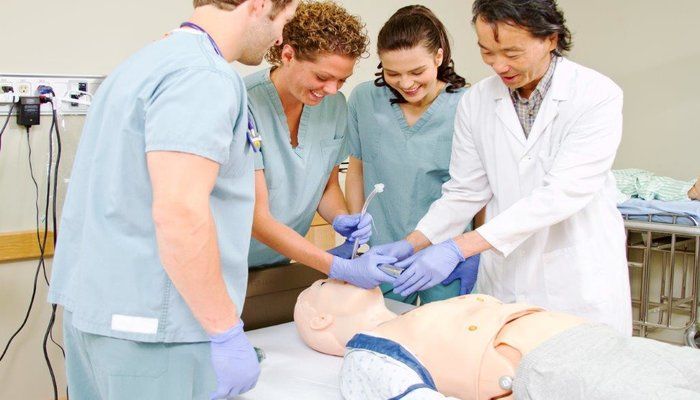Many high school graduates fret over their future, and for those following the news, the situation may seem murkier than ever. According to the New York Federal Reserve, the nation’s student loan debt has reached a staggering $1.16 trillion. Couple this with today’s crummy job market and students weighing their options might begin to wonder if college is even worth it anymore. Well, one report says it is. In fact, recent research suggests the only thing less affordable than college is not going at all.
The case for college
A 2014 study from the Pew Research Center found that college-educated millennials outperform their less-educated peers on practically every economic measure. According to the report, the median annual salary for full-time workers ages 25 to 32 who possess bachelor’s degrees is roughly $17,500 higher than for those with high school diplomas alone — the widest education-related earnings gap in modern history. College graduates also have significantly lower unemployment rates — 3.8 percent compared to 12.2 percent — and report being more satisfied with their current jobs. The analysis is based on a nationally representative survey of 2,002 adults, supplemented with economic data from the U.S. Census Bureau.
The idea that college grads earn higher salaries is not precisely new: The Bureau of Labor Statistics has reported for years that earnings tend to increase with education, especially with advanced degrees. What makes the Pew report so significant is that it not only finds those same trends for today’s college grads, in this post-recession economy, but reveals the disparity is actually widening. When the Baby Boomers were in the same age bracket (25-32), bachelor’s degree holders earned 23 percent more than high school graduates (based on median annual wages). Today, that gap is a whopping 38 percent.
College grads may wonder why, despite these promising numbers, they still feel like they’re struggling more than previous generations. According to Pew, there is a very good reason for that: They are.
High school diplomas: Not what they used to be
A preliminary review of Pew’s data might lead one to think that a college degree is worth more today than it was a few decades ago, but according to the study, that’s not exactly the case. The Great Recession affected most Americans across the board, but it hit millennials particularly hard. Pew reports that the share of today’s young college graduates living in poverty is larger than it was for Gen Xers, baby boomers and members of the Silent Generation at the same age. But as much as recent college graduates are struggling, Pew notes those without degrees are struggling more. It’s not that college degrees are worth more than they used to be — it’s that high school diplomas are worth less.
Today, foregoing a degree may not only mean less money, but also a more challenging job market, higher poverty, and more regrets. It’s no wonder, then, that nine out of 10 college graduates told Pew they were happy with their decision to go to school, even if their entrance into the career world has been a rocky one. As with most things, however, some are happier than others.
Major matters — but only to a degree
It is no secret that some college graduates may earn more and enjoy greater job security than others, and according to a new report from Georgetown University, much of that good fortune can be traced back to major. Their analysis reveals that almost all of the highest paying college majors last year were in STEM, health, and business fields. Early childhood education, human services, and performing arts majors, on the other hand, tended to earn the least. In fact, the 2015 Georgetown reports that the top-paying majors earn graduates $3.4 million more over their lifetime than the lowest-paying ones. Perhaps that’s why, according to Pew, science and engineering majors are less likely than those from other disciplines to regret their choices. They are also more likely to say their educations were relevant, and tend to stay in their chosen field. Social science majors were found more likely to regret their college choices, less likely to say their educations were applicable to their jobs, and apt to change industries more often.
Despite this variation, Pew notes that the vast majority of college grads still say higher education is a worthwhile investment. Paul Taylor, Pew’s executive vice president and co-author of the report, is inclined to agree.
“In today’s knowledge-based economy, the only thing more expensive than getting a college education is not getting one,” Taylor told The Associated Press. “Young adults see significant economic gains from getting a college degree regardless of the level of student debt they have taken on.”
Sources:
“6 key findings about going to college,” Pew Research Center, February 11, 2014, Andrea Caumont, http://www.pewresearch.org/fact-tank/2014/02/11/6-key-findings-about-going-to-college/
“Earnings and unemployment rates by educational attainment,” Bureau of Labor Statistics, 2015, http://www.bls.gov/emp/ep_chart_001.htm
“Student loan debt piles up to $1.16 trillion: NY Fed,” CNBC, February 15, 2015, John W. Schoen, http://www.cnbc.com/2015/02/17/student-loan-debt-piles-up-to-116-trillion-ny-fed/
“The Rising Cost of Not Going to College,” Pew Research: Social & Demographic Trends, February 11, 2014, http://www.pewsocialtrends.org/2014/02/11/the-rising-cost-of-not-going-to-college/
“Widest Earnings Gap For College Grads In 48 Years,” Associated Press, February 11, 2014, Hope Yen, http://bigstory.ap.org/article/widest-earnings-gap-college-grads-48-years
“The Economic Value of College Majors,” Georgetown University Center on Education and the Workforce, 2015, https://cew.georgetown.edu/cew-reports/valueofcollegemajors/












































